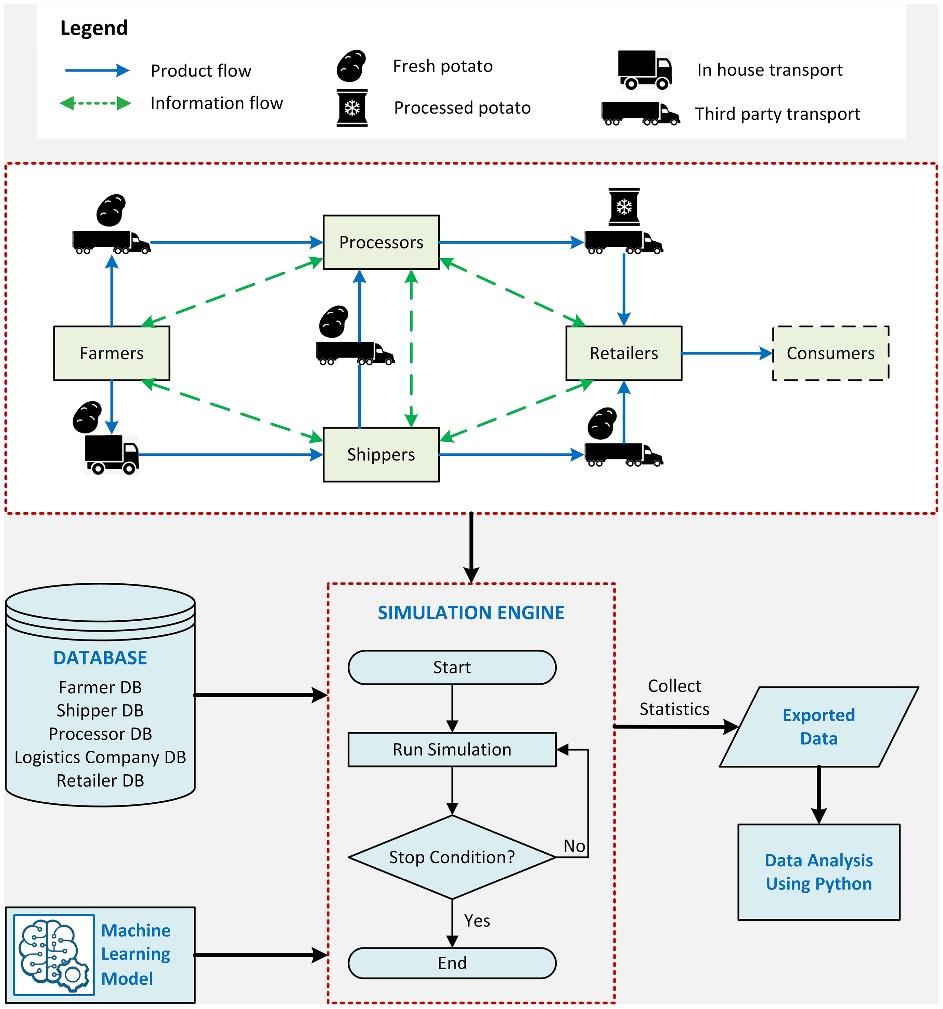Food and Agriculture Supply Chain (FASC)
Supply Chain & Market Analysis
Model Description
The world is experiencing frequent extreme weather events like droughts, snowstorms, and shifting of seasons due to climate change. Increased frequency and severity of these extreme weather events threaten food security because agriculture depends on climate conditions. Impacts of climate change on the agricultural system not only occur at the grower’s level, but also cascade to other levels along the supply chain. This study aims to quantify a wide range of economic impacts of different extreme climate events on different stages of a food supply chain. Our case study is a potato supply chain with five core stakeholders including farmers, shippers, frozen food companies (or processing companies), logistics companies, and retailers.
This model allows users to gain insights into three key areas. First, they can analyze the heterogeneous impact of climate change on various agents along the supply chain, which is the basis for developing risk management strategies. Second, they can conduct sensitivity analysis to understand non-linear relationships between disruptions and impacts, enabling future research to set thresholds for SC resilience. Finally, they can evaluate substitution effects during disruption events dynamically to reveal price hike impact of one commodity on another
The simulation model was built in AnyLogic Professional 8.7, a powerful agent-based simulation modeling software. The software allows users to connect with external databases, import geographic information system (GIS) maps, and write custom codes in Java programming language to model very complex systems. It also allows connecting with the open street map (OSM) database to import road network data. Moreover, trained machine learning Python models can be integrated with AnyLogic simulation models using the Pypeline library. The SC model contains eight farmers, two shippers, two processors, three retailers, and two logistics companies. Each of the logistics companies owns 10 trucks and each shipper owns three in-house vehicles. The time step was one hour, while the time horizon was three years. This time horizon was chosen so that the model can reach equilibrium in the first year after initialization. Disruption events are introduced in the second year and impacts can be observed in the second and third years. The spatial scale was set so that 10 pixels are equivalent to one meter in distance. The geographic information system (GIS) capability of AnyLogic has been utilized to generate the transportation network information of Idaho by linking with the open street map (OSM) server.
The model workflow can be viewed in the following diagram.

A detailed description of the model can be found in our published article (“Multi-level impacts of climate change and supply disruption events on a potato supply chain: An agent-based modeling approach”).
To view or modify the code, users need to have Anylogic installed on their computers. For Anylogic licensing options, please go to https://www.anylogic.com/purchase/
Please contact the authors or INL’s Technology Deployment Department ([email protected]) for licensing options. The code can be made available for free for learning purposes.
This work has been supported through the INL Laboratory Directed Research & Development (LDRD) Program under award number 21A1050-082FP.
These data were produced by Battelle Energy Alliance, LLC. under Contract No. DE-AC07-05ID14517 with the Department of Energy. The Government is granted for itself, and others acting on its behalf, a paid-up, a nonexclusive, irrevocable worldwide license in this data to reproduce, distribute copies to the public, prepare derivative works, perform publicly and display publicly, and to permit others to do so. Neither the United States nor the United States Department of Energy, nor any of their employees, makes any warranty, express or implied, or assumes any legal liability or responsibility for the accuracy, completeness, or usefulness of any data, apparatus, product, or process disclosed, or represents that its use would not infringe privately owned rights.
Author Contact
- Ruby Nguyen
- [email protected]
-
Idaho National Laboratory
1955 N. Fremont Avenue
Idaho Falls, ID 83415

